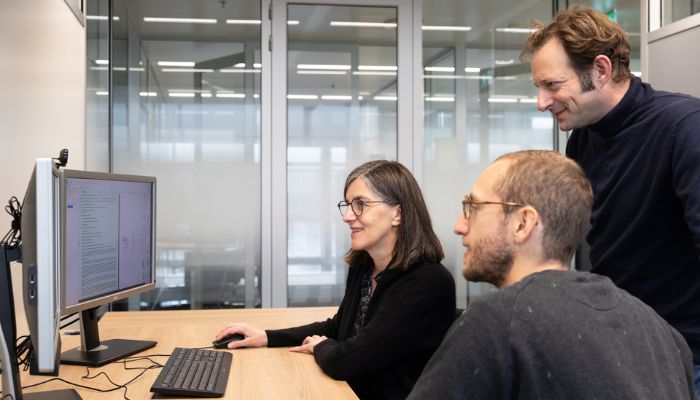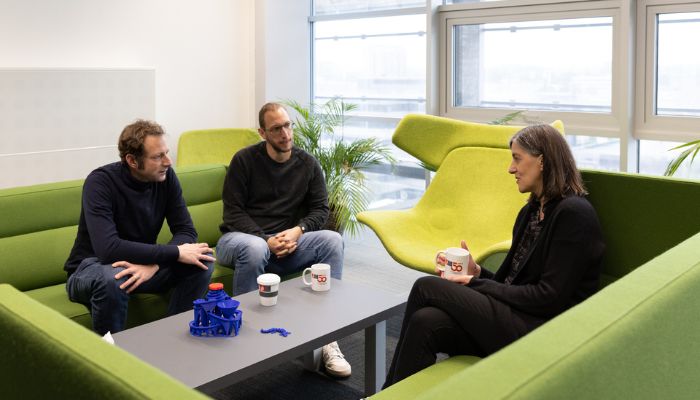#Working3D: Six Questions for a 3D Printing Patent Examiner

In our #Working3D series of articles, we analyze the different professions in the additive manufacturing industry. In this latest edition, we had the opportunity to learn more about the field of work related to 3D printing patents. More specifically, we interviewed Monica Lozza, a representative of the European Patent Office (EPO), who told us what her profession as a 3D printing patent examiner consists of. We asked her to tell us how her day-to-day work is structured, what qualifications have enabled her to achieve this role, and to give advice to those who wish to enter the same profession.
3DN: Could you introduce yourself and tell us a bit more about the EPO?
 Hi, my name is Monica Lozza and I work as a patent examiner at the European Patent Office (EPO) in The Hague. The EPO is the authority that grants patents in Europe to inventors, researchers and companies around the world. It is one of the largest public service organizations in Europe, with about 6,300 employees, including more than 4,000 scientists and engineers working as patent examiners.
Hi, my name is Monica Lozza and I work as a patent examiner at the European Patent Office (EPO) in The Hague. The EPO is the authority that grants patents in Europe to inventors, researchers and companies around the world. It is one of the largest public service organizations in Europe, with about 6,300 employees, including more than 4,000 scientists and engineers working as patent examiners.
We work in all fields of technology, and I work in a team with ten colleagues focused on plastic 3D printing. My area of expertise is plastic 3D printing solutions and processes, so I deal specifically with patent applications filed with our office in this field. In other teams, other colleagues focus on metal 3D printing, others on digital aspects of the technology, and still others on other materials (biomaterials, etc.).
3DN: What is a typical day for a patent examiner in the field of 3D printing?
Every patent application is different and therefore every day is different. Patent applications are text and drawings that describe an invention. We start with a formal check and then perform a search of our databases, because we need to determine if the alleged invention is really new or if it already exists somewhere else in the world. Patents are granted only for novel, non-obvious, industrially applicable technical inventions.
Our daily work thus combines scientific expertise with analytical research and an eye for the legal aspects of intellectual property. To ensure the highest quality, each patent application at the EPO is examined by a team of three examiners. In addition, if needed, we consult colleagues who may have information from other areas of expertise and communicate with applicants to align their application with the legal requirements for a European patent.

Monica Lozza with her team
3DN: What qualifications and experience are required to work as a patent examiner?
To become a patent examiner, you need a bachelor’s degree in a science or engineering subject, the minimum requirement being a master’s degree. The degree should be relevant to the technical field in which you want to work. For example, I graduated from Milan Polytechnic University with a degree in chemical engineering. Excellent language skills are also needed, as we work in three official languages: English, French and German.
3DN: What is your view on the current situation in the 3D printing patent market in Europe and the world?
The EPO has just released a study on global trends in 3D printing innovation, which finds that Europe and the United States are leading the global race in innovation in this technology. We have observed a large and rapid increase in the number of patent applications filed with the EPO. There are many inventions from large companies, but also from universities, public research institutes and startups.
On a personal note, I can certainly confirm this strong growth of patent applications in the field. When I joined the EPO 15 years ago, after college and after a stint in industry, I was one of only three patent examiners in the field of 3D printing. At that time, it was not even called “3D printing” or “additive manufacturing,” but “rapid prototyping.” This shows the change in focus of the technology. Today we are more than ten colleagues on my team, and many more examiners handle applications in other areas of the same field.
3DN: What are the biggest challenges you face as a 3D printing patent examiner?
Working as a patent examiner, it is necessary to stay abreast of the latest developments. In the field of 3D printing, we have seen incredible progress, and we need to take into account a strong growth in “prior art” (all publicly available information prior to the date the patent application is filed), which can be in any language including Japanese, Chinese and Korean. For this purpose, the EPO has extensive databases and translation tools that enable comprehensive and accurate searches. We must also be consistent in the application of European patent law to all applications, because the outcome of our work must be predictable in order for patents to be useful to businesses and society.

Examining 3D printing patents requires soft skills and teamwork
3DN: What advice would you give to people who want to enter your profession?
In addition to the minimum requirements mentioned earlier (master’s degree in science/technology and knowledge of languages), you need to have an eye for detail and an interest in innovation. You need to feel comfortable with other languages and communicate clearly. In my case, the work experience definitely served to add practical knowledge to my university background, but many colleagues started working for EPO right after university. The work environment is very international, challenging, and inclusive – girls interested in science and technology should defintely consider applying to EPO!
What do you think about this 3D printing profession? Let us know in a comment below or on our Linkedin, Facebook, and Twitter pages! Don’t forget to sign up for our free weekly Newsletter here, the latest 3D printing news straight to your inbox! You can also find all our videos on our YouTube channel.
*All Photo Credits: © European Patent Office






